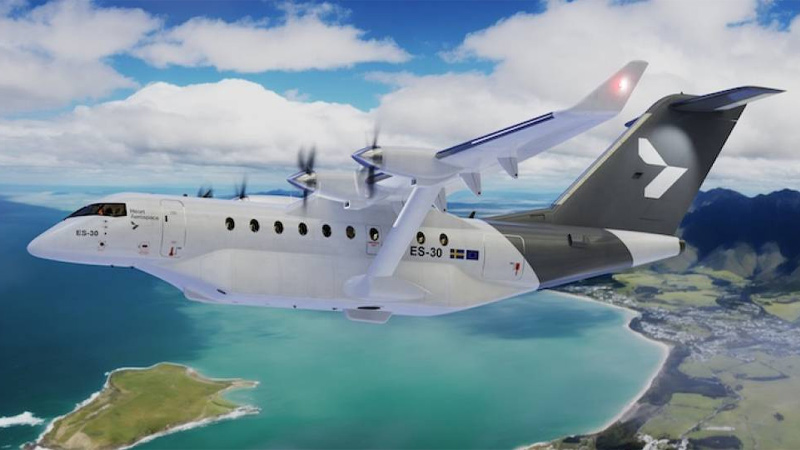

Image Courtesy: Heart Aerospace
Due to the focus on eVTOL in the emerging and disruptive aviation sector, it’s easy to overlook traditional CTOL (conventional take-off and landing) aircraft. But because of their ubiquity in commercial and private aviation, they’re still a potential site of innovation.
Will developments in EVTOL render CTOL aircraft obsolete, or is it fair to assume that these different technologies can exist alongside each other?
Conventional Take-0ff and Landing (CTOL) aircraft are something we’re all familiar with. Aside from developments in range increases and fuel efficiency, the technology used to fly a CTOL aircraft hasn’t changed much in a long time. eVTOL, on the other hand, is novel in all kinds of ways; whether this is the drive trains, power source, or flight modes.
However, CTOL aircraft offer numerous advantages in the world of electric or hydrogen aircraft. The most obvious is that they offer access to existing infrastructure in terms of production, flying sites, flight paths, and more. Similarly, the cost of adapting a CTOL aircraft to run on alternative fuel sources is much lower than developing an entirely new type of aircraft.
This is partly due to certification. For example, companies like Maeve Aerospace and Heart Aerospace are developing brand-new electrical aircraft for regional air routes, which will likely require a full-type certificate (TC). The aim of these companies is to provide a long-term solution for reduced carbon emissions from regional travel.
Companies such as ZeroAvia and Dovetail Electric Aviation, on the other hand, plan to adapt existing aircraft with electrical propulsion technology, which will likely require a Supplemental Type Certificate (STC). This approach will hopefully give them a shorter route to certification that will allow them to be flying sooner and therefore help to reduce current regional air emissions.
The same is true for Vaeridion Aerospace, which is developing a 9-seater glider-style aircraft with a potential range of up to 500km. Although none of these aircraft are capable of long-range international flights, they’re certainly good steps in the sustainability journey.
Along with cost and existing infrastructure, range and scalability are key advantages of adapting CTOL aircraft to sustainable fuel sources. Using existing flight routes allows companies to set clear goals in terms of range, and once the technology has been optimised, production won’t be difficult.
CTOL differs from eVTOL as they need more space to take off, whereas the latter can tackle more targeted ‘door-to-door’ regional flights. Companies such as Odys have built their aircraft solution targeting this market, as it doesn’t require a full-scale runway to take off and land, so can make use of urban areas and small local airports, which are more common in countries like the USA.
CTOL has a power requirement advantage over eVTOLs, however, as vertical takeoff and landing are energy-intensive manoeuvres, which means the former will likely have a longer range per flight. This makes CTOLs an attractive option in terms of accessibility for regional flights: you can simply plan longer routes and use existing flight paths.
There’s the obvious benefit of CTOL having a proven safety record. EVTOLs are completely novel, and so require all new legislation and safety testing. Sustainable CTOL, on the other hand, are less likely to be bogged down in legal red tape, making them a prime site for investment.
Consider also the familiarity of traditional aircraft; flyers and passengers will be more likely to psychologically lean toward travelling in a craft they are familiar with, whereas VTOL craft, such as helicopters, are less adopted in the commercial mainstream aerospace industry, with more of a niche user group.
Importantly, CTOL and eVTOL will serve different areas, and, thereby, target markets. CTOL will likely always be the option for long-distance and longer-range regional travel, whereas EVTOL looks better suited to inter-city or shorter-range regional journeys. Either way, the development of sustainable fuel sources in either niche is a win for us all.
Next in the series: Exploring the Different Approaches to Developing Aircraft Technology: Comparing Large OEMs and Small Start-Ups.